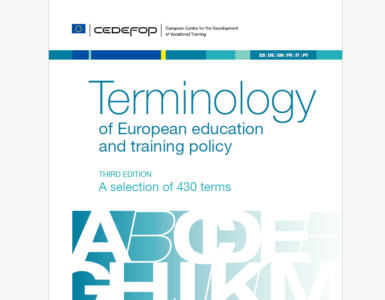by Sidney Martin, Anna Espasa, Universitat Oberta de Catalunya, and Ibis M. Álvarez, Universitat Autònoma de Barcelona, Spain.
Feedback is key in order for students to improve their learning. However, there are many ways in which such feedback can be delivered. Technology has a say in this since it can help both teachers and students improve their teaching and learning experience. We also know that students, both online and face to face, feel anxious whilst learning a foreign language, especially when it comes to speaking, also known as Foreign Language Anxiety, and on top of that, they have feedback preferences. Throw all these elements into the mix and what do you get? Our paper, whose main goal is to collect anxious and non-anxious online students’ perceptions of video feedback in an online pronunciation task. Students are at the centre of our research since we want to find out what kind of feedback works best for them in order to improve both our teaching and their learning experience in an online environment.
In order to collect their perceptions, we designed a task so that video feedback could be delivered in an online course of English language. By means of a questionnaire administered to the participants of the study, we also identified which students saw themselves as anxious and who didn’t. The questionnaire also allowed us to statistically correlate the kind of corrective feedback anxious and non-anxious students preferred. At this point, we were ready to deliver video feedback which incorporated a specific type of corrective feedback in an online pronunciation task, depending on whether the recipients saw themselves as anxious or non-anxious. The video feedback was created by means of screencasting software in which the teacher would record his feedback whilst going through the student’s video, stopping wherever necessary in order to provide corrective feedback.
After the students completed the task and received their video feedback, they were interviewed so as to collect their views about the design of the activity as well as video feedback. Here are some of the nuggets we found:
- video feedback is a tool that draws teachers and students closer in an online learning environment. Students felt closer to their teacher since they could hear his voice and the feedback delivered was perceived as more personalized. In other words, students felt that their teacher cared about them.
- video feedback is a tool that will help students feel more engaged with the task, since the message delivered is much clearer than when it is in written form. Many underlined the fact that seeing exactly where they needed to improve helped them feel less anxious. There seems to be a link between the clarity and usefulness of the feedback and the feeling of confidence.
But one mustn’t forget that technology without the pedagogical foundations supporting it is rendered useless. That is why knowing your students is key and this is what we did in our study: how do students see themselves in terms of their anxiety? are they “worriers” or “warriors”? what kind of corrective feedback do they prefer? Basically, you need to know your students in order to deliver feedback which is meaningful and useful to them. All this should come before using technology. All of these elements should be included in our teaching practice in order to help our “worrier” students become more confident, more “warriors”.
So. Feedback is key in order for students to improve their learning. True. This is why we keep digging in order to find ways to improve its provision and help our anxious students. Doing this research has been hard. True. But the nuggets you may find during the process makes it all worth it, especially if you can share them with others. Enjoy our paper!
Editor’s note: This article has been inspired and adapted from: Martin, S., Alvarez, I.M. & Espasa, A. Video feedback and Foreign Language Anxiety in online pronunciation tasks. Int J Educ Technol High Educ 19, 19 (2022). https://doi.org/10.1186/s41239-022-00324-y

Author
Sidney Martin. PhD student at the Universitat Oberta de Catalunya and member of “Feed2Learn” research group. Teacher at the Escola Oficial d’Idiomes de Tarragona and tutor at the Institut Obert de Catalunya, Departament d’Educació.

Author
Ibis M. Álvarez, PhD in Educational Psychology. Senior lecturer. Universitat Autònoma de Barcelona.

Author
Anna Espasa, PhD in Information and Knowledge Society. Associate professor at the Universitat Oberta de Catalunya.














